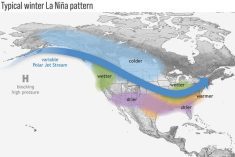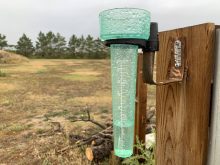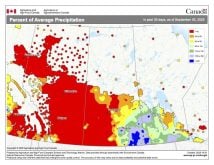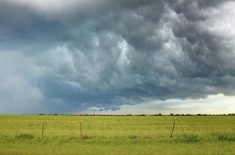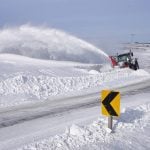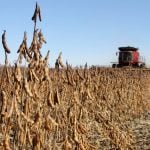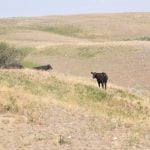In the last issue I promised we would take a look at the long-range winter forecasts, but before we do that I have to take a moment to discuss Super Typhoon Haiyan, which hit the Philippines a couple of weeks ago. First, just for clarification, a typhoon is the same thing as a hurricane. Typhoon is the name given to these storms when they form over the western Pacific Ocean. These tropical storm systems become typhoons or hurricanes when the sustained winds reach a speed of 74 miles per hour or 119 km/h. A typhoon becomes a super typhoon when sustained wind speeds hit 150 m.p.h. or 241 km/h. In the Atlantic, this would be a Category 5 hurricane.
Read Also
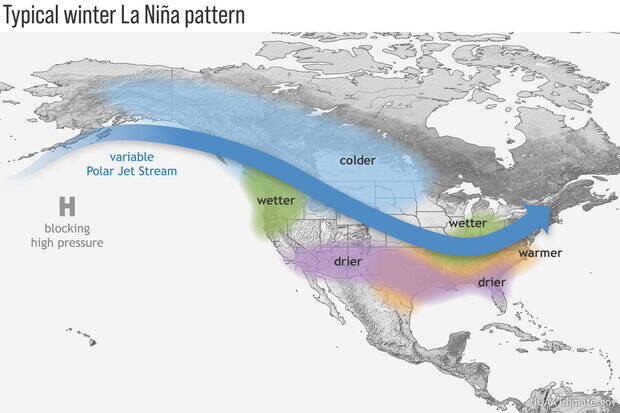
Forecasting winter 2025-26 in the Prairies
Weather expert Daniel Bezte looks at predictions for the coming winter on the Prairies.
Initially, Super Typhoon Haiyan was reported as possibly being the strongest typhoon or hurricane to hit land ever, with a satellite-estimated sustained wind speed of 195 m.p.h., which is five m.p.h. greater than that of Hurricane Camille, which hit the southern U.S. in 1969. Using satellite imagery to estimate the wind speed of these storms is not an exact science and reports are coming in that wind speeds were possibly only in the 160 m.p.h. range. Even if 160 m.p.h. were the strongest winds, when it hit land that would be the equivalent of an F3 tornado, only much bigger in size and lasting a whole lot longer.
We’ll probably never know what the true wind speeds were for this typhoon and whether or not it was a record storm is irrelevant — what is relevant is the fact that a very destructive storm hit the Philippines and has caused extensive damage, with early estimates reporting insured damages of as much as $2 billion, total economic damages approaching $14 billion, and estimates that as many as 6,000 may have lost their lives to this devastating storm.
To put what has happened in the Philippines into some kind of perspective, here is a partial quote from storm chaser Josh Morgerman of iCyclone.com, who was in the city of Tacloban, directly hit by the storm.
“First off, Tacloban City is devastated. The city is a horrid landscape of smashed buildings and completely defoliated trees, with widespread looting and unclaimed bodies decaying in the open air. The typhoon moved fast and didn’t last long — only a few hours — but it struck the city with absolutely terrifying ferocity… meteorologically, Super Typhoon Haiyan was fascinating; from a human interest standpoint, it was utterly ghastly. It’s been difficult to process.”
The coming winter
On that rather sad note, let’s lighten things up a bit and take a look at what the long-range forecasts are calling for in our part of the world this winter.
While there are a number of different people and organizations that come out with long-range winter forecasts, I think this year we’ll focus only on the forecasts that I use to create our monthly weather outlooks — Environment Canada, Old Farmer’s Almanac, Canadian Farmers’ Almanac, and then for fun, my own forecast.
According to Environment Canada, winter is going to start off with below-average temperatures, especially over western parts of Alberta. These below-average temperatures will continue into January and February with some moderation in temperatures late in the winter over eastern regions. Precipitation looks to be around average this winter according to EC, with northeastern parts of Alberta seeing the best chance of above-average snowfall.
Over at the Old Farmer’s Almanac it is calling for temperatures to start off on the cold side in December, and then get downright bone-chilling cold in January, before moderating back to near-average values in February. Precipitation will be near average in December, but it looks like it could get pretty snowy in January and February, with a call for above-average and then well-above-average amounts.
The Canadian Farmers Almanac is always a tougher one to figure out as its forecast simply describes the weather and doesn’t actually state whether any month will see above, below, or average conditions. So, I’ll have to try to interpret its information and turn it into a general forecast. With this in mind this is what it looks like it is calling for this winter.
December is going to see near-average temperatures along with above-average amounts of snow. It even predicts a major snowstorm hitting the Prairies over Christmas. January will see near-average temperatures, but will fluctuate from cold to warm during the month. Precipitation looks to be near to slightly above average. February will see colder-than-average temperatures with near-average amounts of snow.
Finally, here at Alberta Farmer, I’m calling for… let’s see, spin the wheel and… it looks like the winter will be a combination of EC’s forecast and the Canadian Farmers Almanac. Overall, I think temperatures will be cooler than average, but we will see several cold and warm snaps during the winter. Precipitation will be around average, but I do put the odds on seeing a significant winter storm this year fairly high, simply because I think we are due to see one!
All in all, I hope everyone has a great winter this year and that the weather brings you exactly what you wish for.



